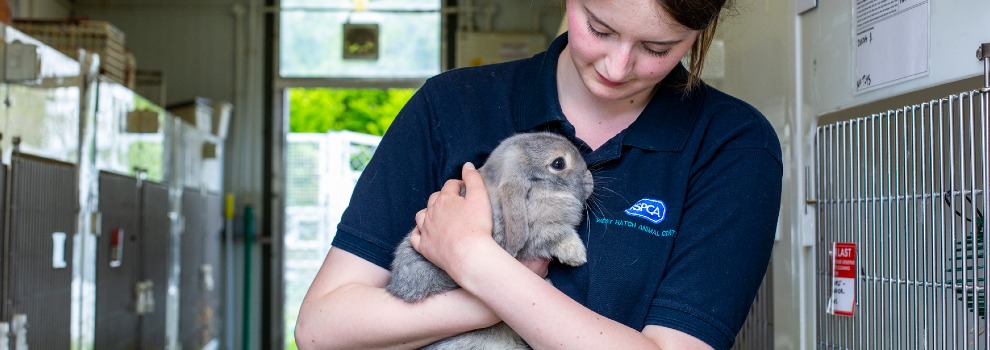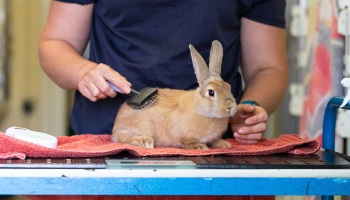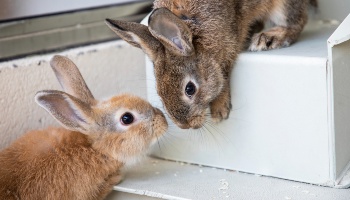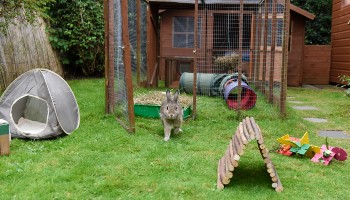- Find a Pet
- Advice and Welfare
- Ways to Give
- Get Involved
- What We Do
- Search
- My RSPCA
- Report a concern
- Sponsor
-
Colour modeVivid Calm
- Home
- Advice and welfare
- Pets
- Rabbits
- Transporting rabbits
Transporting rabbits
We would recommend only transporting your rabbits if it’s absolutely necessary, as they find it stressful. If you can, choose a vet or boarding close to home so your rabbits don’t have to go on a long journey. Take a look at our advice to see how to keep them comfortable and safe when they’re on the move.

- Put some familiar-smelling items from their home in the carrier, such as toys or a handful of unsoiled bedding. This can help your rabbit feel at ease.
- Make sure the vehicle is cool and well ventilated. Rabbits don’t like to be too hot, so avoid travelling during the hottest parts of the day.
- Remember that rabbits are prey animals and get easily frightened, so they need to be able to hide. Try to keep the noise down in the car and add a hiding place, such as a cardboard box or small tunnel, to the carrier. If that's not possible, cover part of the carrier with a blanket or towel.
- Check your rabbits regularly.
- Your rabbit will need constant access to fresh clean water (you can buy non-spill travel bottles and bowls).
- Add hay to the carrier for the rabbit to eat. You can also keep a few pieces of your rabbit's favourite food handy – as a reward or as encouragement if your rabbits are reluctant to eat. If you’re on a long journey, monitor your rabbit’s eating, drinking and toileting, as you may need to contact a vet if it changes.
- Partially cover the carrier to help your rabbits feel more secure, especially when it’s very bright or you’re travelling at night (so they’re not frightened by car headlights). Remember to check that there’s still good ventilation.
- If your rabbit is pregnant, talk to your vet to make sure they’re fit to travel and for advice on how to make sure they’re comfortable.
The carrier
Transport your rabbits in a sturdy, non-collapsible, well ventilated and secure carrier that they can’t easily chew through or escape from (they can chew through cardboard boxes).
- Make sure the carrier is big enough for your rabbits to lie comfortably in any direction and turn around easily.
- Line it with newspaper and add some hay, so the floor isn’t slippery.
- Choose a design that opens from the top and the front – that way it will be easier to take the rabbits out.
- Get your rabbits used to the carrier beforehand. You can leave it in their living space with the front door open to encourage them to investigate.
- Entice your rabbits into the carrier with a healthy snack or some greens.
- Strap the carrier into your vehicle with a seat belt or secure it in a foot well (behind a seat), so your rabbits are safe and not jolted.
- Make sure the side of the carrier faces the direction of travel so the rabbits aren’t thrown face on if you have to brake suddenly.
- Never put the carrier in direct sunlight or in the boot of a saloon car (where there’s no light and little ventilation).
Companion rabbits
If your rabbit is usually kept with a companion rabbit or a group of rabbits, you should take their companion(s) too. The presence of a familiar rabbit will help them stay calm, as separation can lead to stress. It can also cause problems when you reintroduce them later.
If the rabbits have been separated, gradually reintroduce them. You could rub a cloth over the rabbit who was away and then rub it over the rabbit(s) left at home. Then let them meet in a neutral setting under your supervision, with hiding places and enrichment. You can house them together again once they’re happy and settled in each other’s company.



